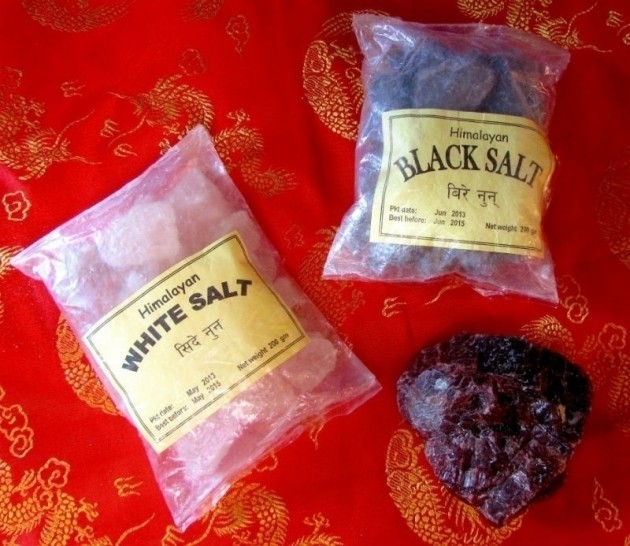Although there may be other factors that contribute to solar keratosis (nutritional status, vitamin D insufficiency, subcutaneous accumulation of toxins, trans fats, rancid fats, free radical damage, depressed immune system, electromagnetic radiation/EMR or fields/EMF), excessive solar exposure remains the most obvious and substantial cause. This is why we see fair-skinned individuals (with lower density of protective skin pigment) as having a high risk for developing solar keratosis. Those who spend (or have spent) many midday hours in the outdoors, such as gardeners, farmers, hunters, hikers, outdoors athletes, golfers, tanning "professionals," and sun-worshippers have the greatest likelihood of developing these skin abnormalities, especially if they reside or have resided in ozone-depleted areas that increase exposure to solar radiation. It's ironical that most sunscreens always reduce the inflammatory response to UVB exposure, but do not sufficiently protect against UVA, which is much more damaging. By eliminating the warning signs that would cause us get out of the sun, they only increase UVA exposure. This may explain the fact that since sunscreens have been introduced 10-15 years ago, the prevalence of skin cancer and solar keratoses have dramatically increased, appearing even in children, a population that had previously been rarely affected.
The problem with recognizing this skin condition at the earliest phase is that many of the lesions, which take years to develop, start as flat areas of roughness that are pigmented similarly to the skin surrounding them. Therefore, they are often invisible initially, requiring gentle palpation with a sensitive finger to recognize their presence. At that phase, they tend to grow slowly and usually cause no signs or symptoms. They may be hard to detect even later on, when they become scaly, because the scales may slough off intermittently, causing the lesions to "disappear." As a result, the typical patient may have no significant concerns about these patches, even when they grow back. This is why solar keratosis lesions often remain untreated for many years, gradually developing into increasingly noticeable (thicker, tougher) and riskier lesions. When a solar keratosis has become thickened or ulcerated, especially if it looks like a "volcanoes" erupting within the skin, it may have already advanced to squamous cell cancer (or other skin cancers).
The Standard Approach
Most reputable medical authorities agree that solar keratosis lesions should be removed, because of their well-established propensity to become cancerous and because they are unsightly and uncomfortable. Unfortunately, the treatment available to most medical doctors is invasive, toxic, or surgical, with risk of inflammation, deep scarring, infection, discomfort, and the potential need for anesthetics. Therefore, doctors are hesitant to treat the early manifestations of solar keratosis, and often neglect to diagnose these milder, almost invisible lesions that they do not intend to treat anyway. In addition, the patients neglect to mention these seemingly innocent lesions at the initial phase, drastically reducing the chance for early diagnosis and therapy.
Once the diagnosis is established, and especially in high-risk individuals, the majority of medical practitioners take the wait-and-see approach, requiring their patients to visit them regularly to monitoring the abnormal skin areas, until a lesion becomes thick or bulky enough, and suspicious enough to justify an unpleasant surgical or aggressive removal (using liquid nitrogen cryotherapy, curettage & cauterization, or strong inflammation-causing creams). Susceptible individuals would appreciate knowing that there is a safer, pain-free, pre-emptive option that is not nearly as invasive and can therefore be employed at earlier phases of the condition, reducing the risks, discomfort, and multiple follow-up "monitoring" visits associated with the "standard" medical approach.
A Safe, Non-Invasive option
Modified 85% trichloracetic acid has been used successfully in the USA during the last 75 years as a treatment for various skin lesions including solar keratosis, but because it has not been described as a "standard" treatment option in medical schools and hospitals, it has remained relatively anonymous. The treatment is non-invasive, and involves gentle application of the liquid on the keratotic lesion, leading to the formation of a scab within 2-3 days, and the sloughing-off of the entire lesion within 2-4 weeks (the larger and flatter the lesion, the longer it takes for the scab to fall). The amount of liquid applied will determine the depth of the area removed. No significant pain is sensed; therefore many lesions can be treated at once without any anesthetics. The results are superior to any surgical procedure, in terms of scarring, recurrence, and patient tolerance. In the rare event that a remnant of the lesion is noticed underneath the fallen scab, another treatment will easily cause it to scab again and thus it will be safely removed in its entirety. No cutting of the lesion or bleeding will ever occur, leaving no chances that any particles of the lesion would enter the blood stream or disseminate to other parts of the body.
I have used this method during the last 20 years, and noted a high level of patient satisfaction. Patients are relieved to know that their keratotic skin damage can be easily diagnosed and treated, without the hassle of repeated visits typical for a lengthy "observation" period, without special preparation, and without discomfort. They are happy to eliminate their lesions before they turn into malignant tumors. And they are satisfied with the ultimate results esthetically. When relatively large, flat areas of keratotic roughness are being treated, the healing time (until the scab falls of) may lengthen significantly, leading to initial discoloration (usually light red) that gradually fades away, leaving minimal scar that is almost invisible, a result that is superior to surgical procedures. If the patient treats the scab "with respect" - avoids picking at it or excessively immersing it in water - the scab will mature and fall more rapidly, almost no discoloration would occur, and no significant scarring will result. The treatment of smaller lesions is even more successful.
I don't charge my patients for looking at their skin to determine if anything looks suspicious. Any diagnosis of skin lesions, moles, blemishes, skin tags, and discoloration is free of charge. If a lesion appears highly suspicious (bleeding, ulcerated, exceptionally thick and crusty), I would refer the patient to see a skin specialist. If a patient presents a keratotic lesion that has been previously treated invasively with questionable results (uneven surface, indentation, or discoloration are clearly visible), I would treat it again to improve the situation, usually with excellent outcome.
Prevention
As with any health condition, recommending preventive measures for solar keratosis (and skin cancer) is always the best approach, even if for many patients this information comes a bit too late:
1. Do not stay in the sun for long periods of time without protection (clothing, hats).
2. If you MUST apply sunscreens, use ones that are relatively non-toxic and that block both UVA and UVB radiation (most products block mostly UVB radiation, eliminating our "warning signs" of redness and inflammation, while allowing greater and lengthier exposure to UVA - the real culprit in skin cancer development).
3. Even in winter, prolonged sun exposure can lead to skin damage by UVA radiation.
4. Wear sun-protective clothing such as hats, long-sleeved shirts, long skirts, or pants when prolonged exposure is anticipated, especially if your skin is fare. However, I recommend short sun-bathing periods 2-3 times per week at around noon (11 AM to 2 PM) in the summer, with front and back exposure of 10-20 minutes each, longer if your skin is darker, in order to increase vitamin D3's protection against skin cancer and other types of cancer (and many, many other disorders). In the winter, take professional-quality vitamin D3 supplements, available in Ecopolitan at a discount.
5. Aside from the sunbathing recommended above, avoid additional sun exposure during the noon hours because ultraviolet light is the most powerful at that time.
6. Maintain a healthy immune system, a good balance of antioxidants, and a diet free of carcinogens, trans fats, and rancid fats. Also, reduce toxins and pollution in your food and environment, including electromagnetic pollution!






